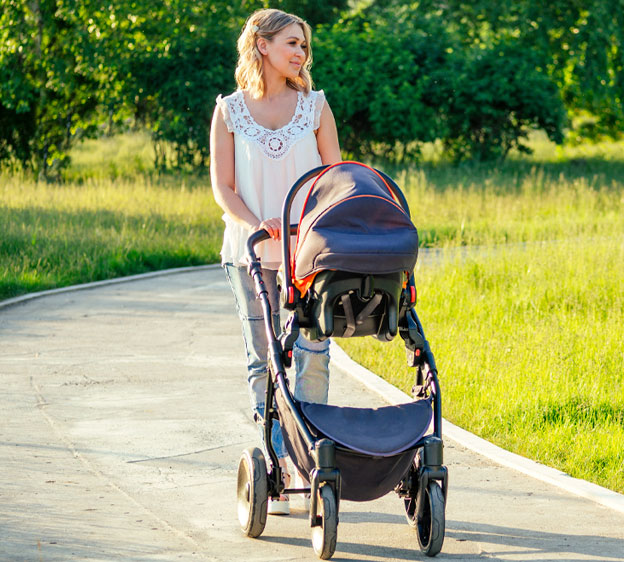
Giving birth is a joyful experience, but your body goes through changes you may be eager to reverse. Pregnancy alters your muscles, skin, pelvis and even the diaphragm that helps you breathe. It may be tempting to jump right into exercise after pregnancy — but it’s important to do so safely while your body is healing.
Benefits of Exercise After Pregnancy
During pregnancy, your abdominal muscles stretch and your back muscles shorten. Ligaments and joints in your pelvis loosen. As you recover after delivery and adjust to life with your new baby, you may find yourself less active, so muscles stay weakened. Exercise after pregnancy can help:
- Improve pelvic floor function
- Improve sleep
- Promote weight loss
- Relieve stress and feelings of depression
- Restore strength
“It’s important every mother allows her body time to rest and heal,” says Dr. Marlena Masavage, a board-certified OBGYN at Beaufort Memorial Obstetrics and Gynecology Specialists. “Returning to exercise after pregnancy depends on how you feel, whether you had a cesarean section or vaginal birth, and how your post-partum recovery is progressing.”
While you may look forward to physical activity after pregnancy, consider setting exercise goals beforehand. These goals can help guide which exercises will be most beneficial.
“Exercise should make you feel good, not make you feel worse,” Dr. Masavage says. “If there’s any bleeding or pain post-workout, that’s a sign your body needs more time to recover.”
Safe Post-Pregnancy Exercises
Most physicians suggest waiting four to eight weeks to resume exercise after pregnancy, but it’s best to speak with your OBGYN before beginning exercise, especially after a C-section.
No matter your activity level pre-pregnancy, it’s good to start with 20 to 30 minutes a day. The Centers for Disease Control and Prevention recommends 150 minutes of exercise a week, approximately 30 minutes a day five days a week. Here are a few exercise suggestions to work your way up to that goal:
- Basic breathing techniques help pinpoint the abdomen to strengthen and engage pelvic floor muscles. To practice, lay down and pull in your abdominal muscles as you exhale. Hold for five seconds. Work up to five to 10 breathing exercises a day until you can contract your abdominal muscles without moving the spine.
- Firm up a post-pregnancy belly with strengthening exercises such as yoga or Pilates. Abdominal muscles have undergone lots of change during pregnancy. Go easy on yourself, and take your time.
- Heel slides help keep abdominal muscles strong. Start on your back with your arms at your sides and knees bent. Engage your abs using the breathing techniques. Inhale while sliding one leg parallel to the floor and exhale as you bring it back up. Repeat on both sides and work your way up to 20 repetitions per side.
- Kegel exercises strengthen pelvic floor muscles, which can help prevent bladder leakage and post-partum hemorrhoids from forming. Pretend you’re stopping urine mid-flow. Hold those muscles tight for five to 10 seconds and repeat up to 20 times a day. Don’t practice Kegel exercises while urinating, because that can prevent your bladder from emptying fully.
- Walking is an effective form of low-intensity exercise. Not only does walking strengthen muscles and help with weight loss, but it’s also good for your heart.
If you need exercise motivation, find a workout buddy to walk or attend classes with. During a workout, listen to music or a podcast. Perform exercises during regular household chores so you don’t forget.
Read More: Your Pregnancy Journey: Rules of the Road
Exercises to Avoid
You should avoid high-intensity abdominal exercises or crunches in the first months after delivery. Pregnancy can lead to a condition called diastasis recti that occurs when abdominal muscles separate. It’s common in women who’ve had multiple pregnancies or have a multiple birth. Excessive crunches or abdominal exercises too soon after pregnancy may make diastasis recti worse.
Beaufort Memorial offers comprehensive pre- and post-pregnancy resources. To learn more, call a member of our maternity team.

